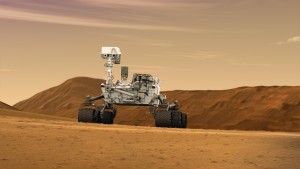How far is too far? On groggy Sunday mornings, the gym may seem “too far”, while for two long-distance lovers separated by circumstances, they are always “close enough”. For some, distance is relative to our motivation. Space, however, does not care what you think.

Voyager 1. Image from NASA.
It’s been over 35 years since NASA’s launch of Voyager 1, and since then, it has travelled almost 20 trillion kilometers from home. You might think that that’s far, but in the grand scheme of the universe where distances are measured with respect to light, it has travelled a mere 18 light-hours. To put that into perspective, the nearest star to our Sun, Proxima Centauri, is about 4.24 light-years away.
So how big is the universe then?
Before we address that, we need to know how old the universe is. Based on measurements of the cosmic microwave background, which is basically leftover radiation from the Big Bang, astronomers are confident that the universe is about 13.8 billion years old. Since Distance = Velocity × Time and nothing can travel faster than light (?), the universe must have a radius of 13.8 billion light-years, right? Wrong!

The Doppler effect on the pink sound waves. Image from user Charly Whisky from Wikipedia.
The short answer to the size of the universe is that it is at least 93 billion light-years in diameter. The reason that the universe is larger expected is because the universe is expanding. This can be determined by the apparent redshift of distant stars due to the Doppler Effect. So an object emitting light from 13.8 light-years away would have moved to a position much farther away.
One thing to note, is that this measurement is only what we can observe. The observable universe from another planet billions of light-years away is likely different from our reference frame of the Earth. Is the universe infinite? Perhaps. But for now, we can appreciate that even though our paradigm of the universe is limited, there is still much to explore; we have observed billions of galaxies, and in each are billions of stars, each hosting their own worlds much like ours. Despite the uncertainty in the true size of the universe, we know that space is vast. As the Dutch artist Vincent van Gogh had once said, “for my part I know nothing with any certainty, but the sight of the stars makes me dream.”
If you have 45 minutes to spend exploring part of our Solar System, check out Alphonse Swinehart’s video below, where you travel from the Sun to Jupiter at the speed of a photon! Do yourself a favour and enjoy the video in full screen mode.
– Trevor Tsang




